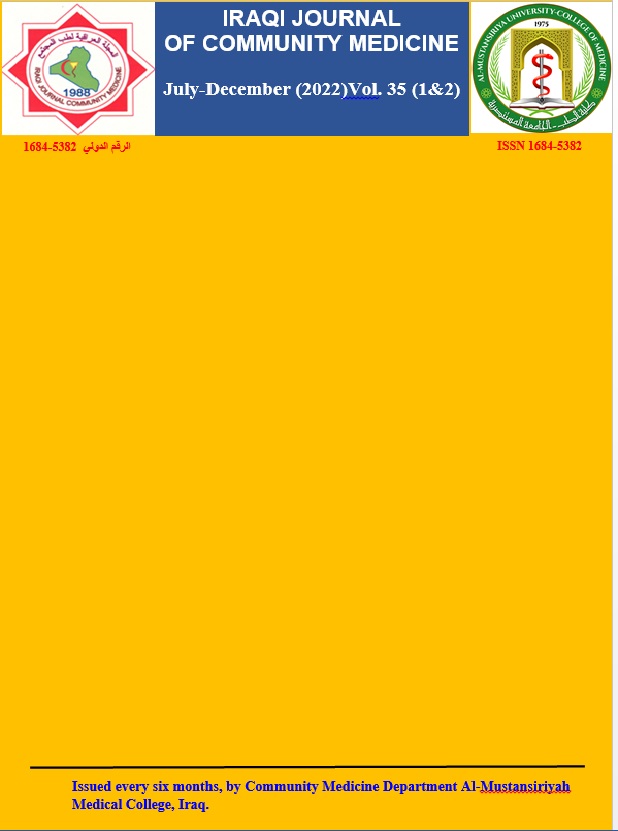Abstract
Objective: To determine some of the clinico-epidemiological aspects of cutaneous leishmaniasis in Iraqi armed forces.
Methods: This study consists of two parts; the first part consists of a retrospective analysis for the recorded cases in the military achieves during the war with Iran (1982-1988) and postwar period (1989-1998). The second part which carried out during the period from July 1999 to April 2000 in Al-Rasheed Hospital/ Department of dermatology on all cases referred to this hospital form all military units in Iraq.
Results: A total of 100 cases of cutaneous leishmaniasis were examined, of these 23 were of wet type and 77 of dry type. Analysis of the results showed that most of the cases (73%) were reported from the middle sector of Iraq. The highest percentage of affected persons (54%) was between 18-25 years old. The most common site of infection was the lower limb (58%), the second was the upper limb (24%), and 18% in the head and neck. The use of pentostam locally and rifampicin showed healing within 1-3 months in 65.3% of cases.
Methods: This study consists of two parts; the first part consists of a retrospective analysis for the recorded cases in the military achieves during the war with Iran (1982-1988) and postwar period (1989-1998). The second part which carried out during the period from July 1999 to April 2000 in Al-Rasheed Hospital/ Department of dermatology on all cases referred to this hospital form all military units in Iraq.
Results: A total of 100 cases of cutaneous leishmaniasis were examined, of these 23 were of wet type and 77 of dry type. Analysis of the results showed that most of the cases (73%) were reported from the middle sector of Iraq. The highest percentage of affected persons (54%) was between 18-25 years old. The most common site of infection was the lower limb (58%), the second was the upper limb (24%), and 18% in the head and neck. The use of pentostam locally and rifampicin showed healing within 1-3 months in 65.3% of cases.
